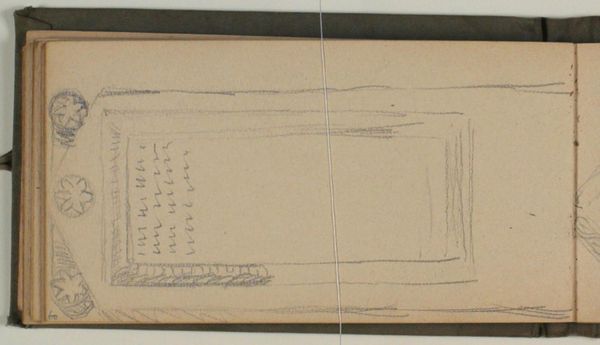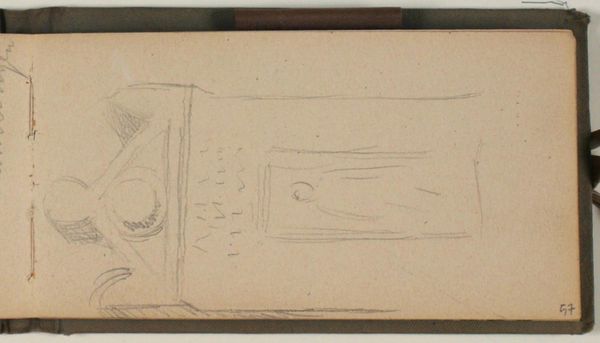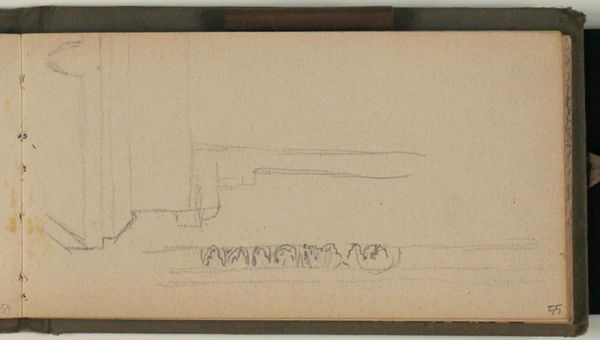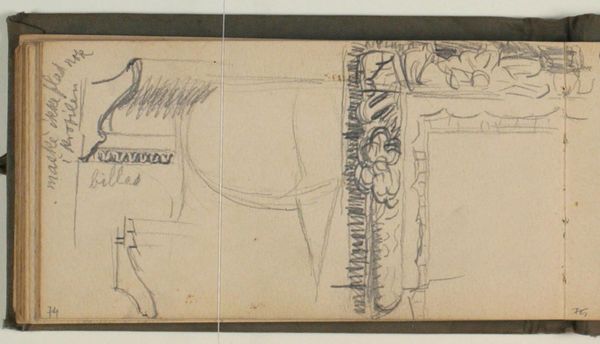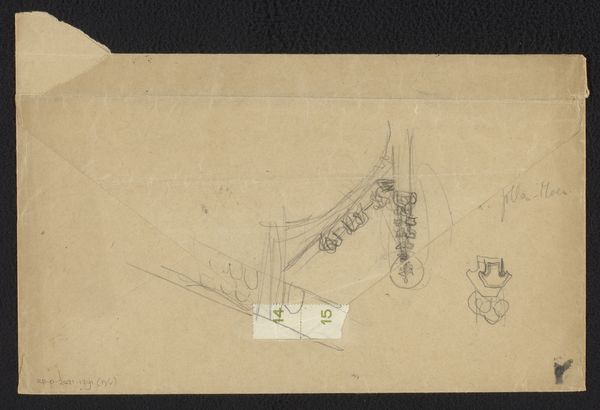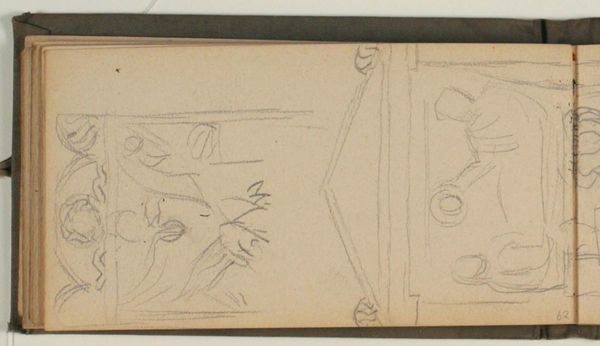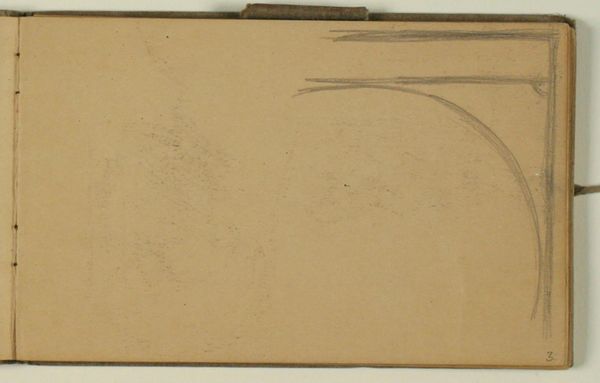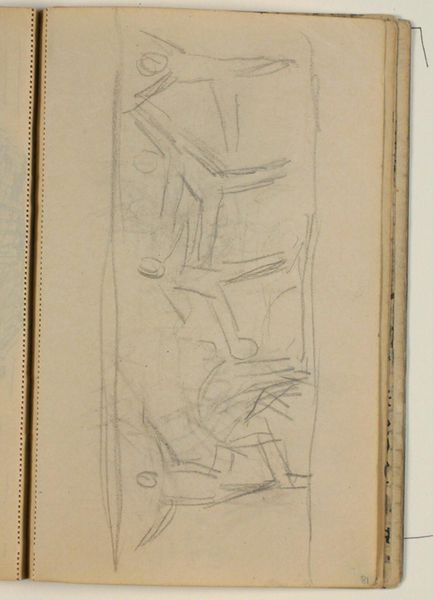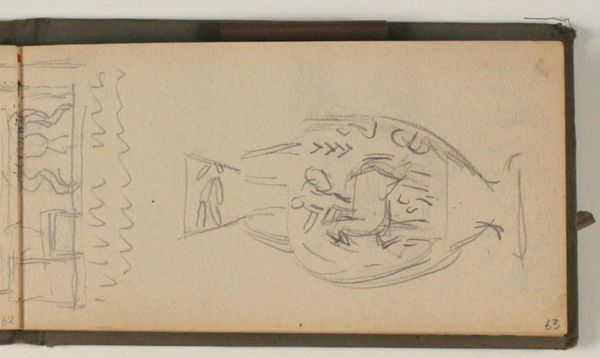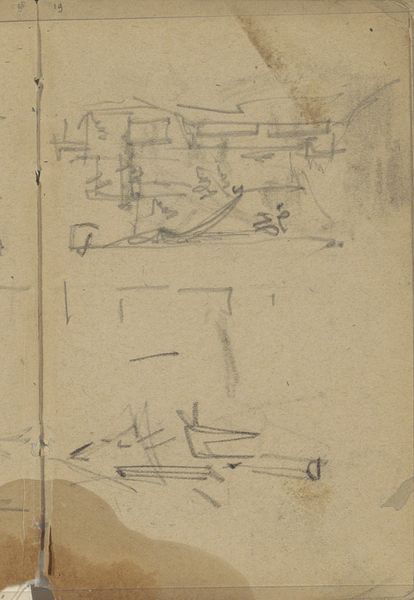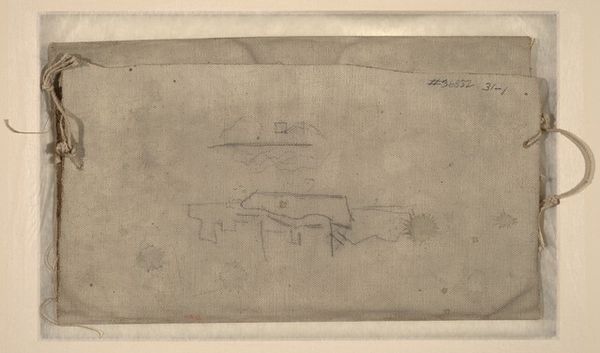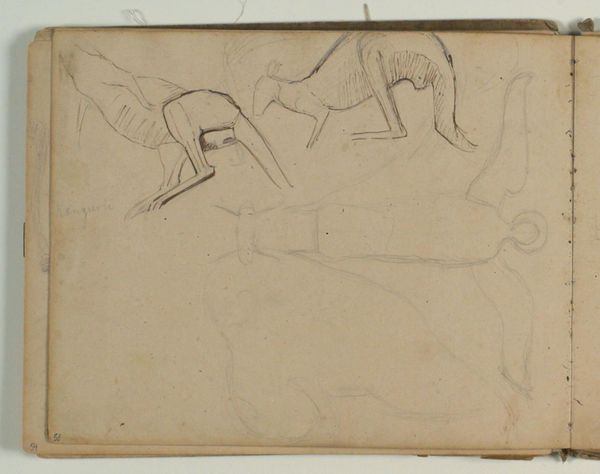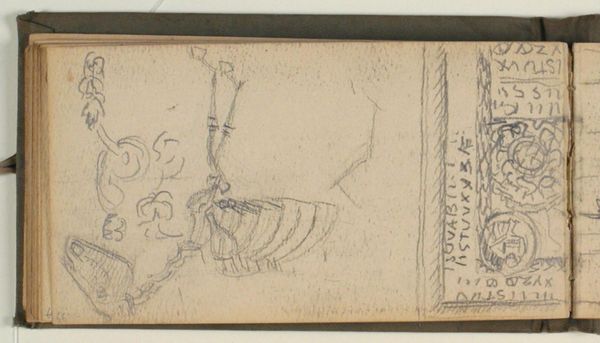
drawing, paper, pencil
#
drawing
#
figuration
#
paper
#
ancient-mediterranean
#
pencil
#
line
Dimensions: 92 mm (height) x 174 mm (width) (bladmaal)
Editor: So, this is Niels Larsen Stevns' 1919 pencil drawing, "Studies of an Ancient Gravestone." It feels...fragmentary. Like we're only getting a glimpse of something much larger and perhaps a little sad. What do you see in it? Curator: It's a really insightful observation. When I look at this sketch, I immediately think about the artist grappling with historical memory and cultural appropriation. Stevns, a Danish artist, engaging with ancient gravestones--what does that relationship signify in the early 20th century? What stories are being selectively remembered and whose voices are being erased in the process of creating this drawing? Editor: Erased? That's a strong word for a sketch. Curator: Well, think about it. A gravestone marks a life, a story. By focusing solely on the aesthetic form, are we potentially overlooking the socio-political context, the identities and struggles represented by the gravestone itself? How much do we know about the context of these ancient objects he studies, or even if they were originally intended to be displayed like this? Editor: I never thought about it that way. It’s like the drawing becomes another layer of interpretation on top of an already complicated history. Curator: Exactly. Art isn't created in a vacuum. What stories did Stevns’ art choose to tell? How can we view them from our time period in a socially conscious way? Editor: This really gives me something to consider, now to rethink what responsibility do we hold while viewing art and, more so, while documenting it. Thanks for widening my perspective. Curator: And thank you for prompting these crucial questions! It shows we are ready to confront and enrich art historical dialogues for generations to come.
Comments
No comments
Be the first to comment and join the conversation on the ultimate creative platform.
